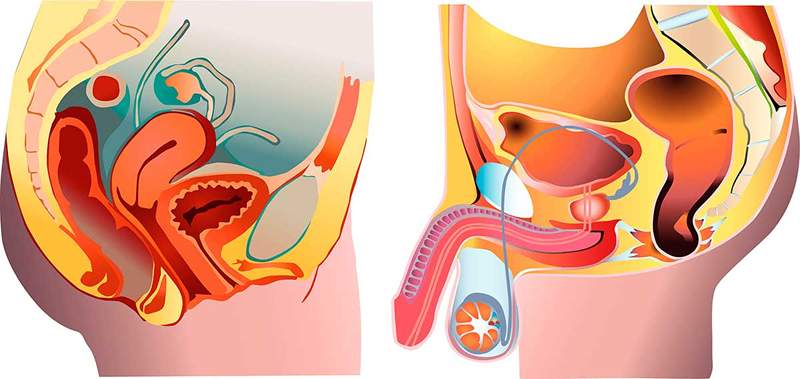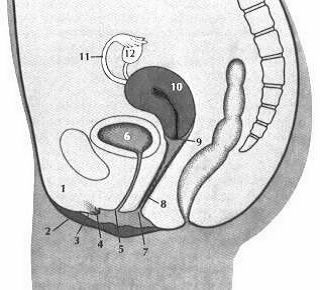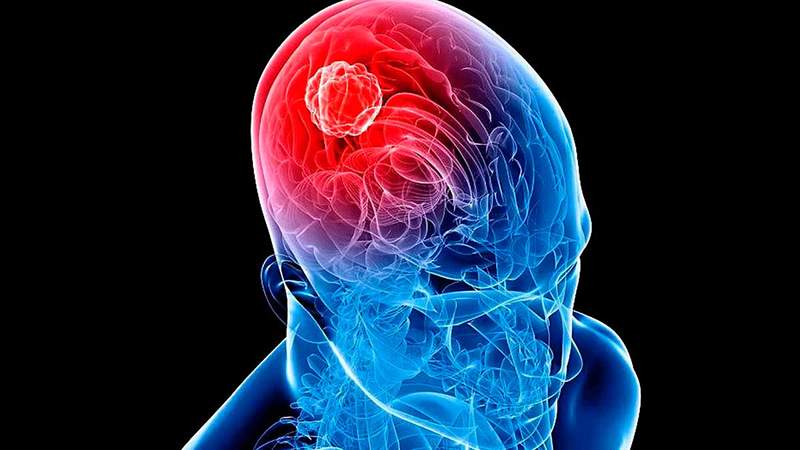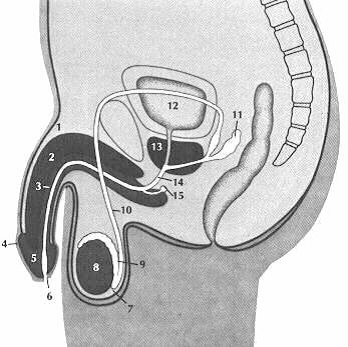Anatomy of the reproductive system and sexual organs

- 1076
- 216
- Lorenzo West I
What do we mean by sexual organs?
The expression "sexual organs" can be used from two points of view.
- The organs that determine the physical sex of a person. They establish the biggest anatomical difference between the sexes. Therefore, sexual organs are also called primary sexual characteristics.
- The term also suggests that they are wrapped in a person's sexual response. Some people are under the false impression that "sexual organs" are the only organs involved. However, the human sexual response is not restricted to a few particular organs, but it is an entire body response. Thus the mouth and the skin, for example, are also "sexual" organs because they transmit and receive sexual stimulus.
Sexual Anatomy of Women
Women's genitals are external and internal.
The external are: The vulva, formed by the major lips, minor lips and the lobby.
In the previous part is the Mount of Venus (1), It is an adipose accumulation located on the pubic bone and is covered with hair.
The major lips (2), There are 2 large skin folds that delimit vulvar cleft, have greater skin pigmentation and are coated with hair.
The Minor lips (3), They are located inside the major lips formed by skin that resemble a mucosa. They have no hair and if sebaceous glands to maintain moisture inside the vulva. Its anterior limb unfolds in two folds that surround the clitoris and form a cap that protects it (4). The clitoris is a very vascularized organ with capacity for erection and that only serves in the anatomy of women for pleasure.
[Themoneytizer id = 18808-1]
The lobby is the area delimited by the minor lips where the urethra
(5) and the Vagina (8). On both sides of the vagina are the ducts where the Bartholino glands flow.
Around the urinary meatus is the mouth of various urethral glands, the most important are those of Skenen. The mouth of the vagina outward is delimited by a fold that narrows it and that is called hymen.
The vagina is a cylindrical duct that goes from the vulva to the cervix, is covered by mucosa and formed by muscles. The most sensitive area of the vagina is located in the previous third of it. Most of the time is a virtual cavity with great elasticity, it is able to house from a finger, a penis, a spulph or the head and body of a newborn during childbirth. It also allows the exit of the blood during menstruation.
The uterus (10) It is a muscular organ, hole located on the Urinary bladder (6) and the rectum. The uterine cavity is covered with the endometrium that is a special tissue that allows the anide of the embryo, when the fertilization of the ovule has occurred.
In the uterus, fertilized ovule is received, so it is easy to understand that depending on the proper maturation of the endometrium and the growth capacity of the uterus, as a whole the future of the embryo in developing will depend.
The lower part of the uterus is called CERVIX (9) Or cervix, it communicates with the vagina and body of the uterus through the cervical channel that is covered with glands that are called endocervical crypts. These glands produce cervical mucus under the influence of estrogens. The sperm depend on cervical mucus for their survival and transport within the uterus.
In The Ovaries (12) The endowment of oocytes that will mature throughout the fertile cycle of women's life is contained.

- Mons pubis
- Senior lip
- Minor lip
- The clitoris glans
- The opening of the urethra
- Urinary bladder
- Vaginal opening
- Vagina
- Cérvix
- Uterus
- Fallopian tube
- Ovary
 Brain tumors: main types and symptoms
Brain tumors: main types and symptoms Sexual Anatomy of Man
The External genitals are: penis (1) and scrotum.
The penis body contains three erectile tissue cylinders: the two cavernous bodies (2), parallel to each other, and the spongy body (3), located under them and that contains The urethra (14). During sexual excitement, erectile fabric is filled with blood, making the penis hard and erect. In the adult, the average penis has a size of 6.4 to 10 cm in flaccid state, a little more than 2 cm in diameter, in a state of erection it extends 12.5 to 17.5 long and about 4 cm in diameter. But these measures are not categorical.
The Glande (5) It is the head of the penis. In non -circumcised men it is covered by a leather fold called Prepucio (4) that can be retracted, attached to the glans by a band of fabric located on the lower surface of the same called frenulum. It has numerous nerve endings, which causes its manipulation to be annoying.
He scrotum (7) It is a leather sack that contains the testicles.
[Themoneytizer Id = 18808-2]
As can be seen in the drawing, among the internal genitals there would be the Prostatic gland (13), that rests under the urinary bladder. The mature prostate is in continuous activity; Part of its secretion goes to urine, while the rest constitutes a large portion of ejaculations, together with the secretion of the Seminal vesicles (11).
The CORRY CONDUCTS (10) They are tubes responsible for transporting sperm from the testicles to the prostate urethra.
Seminal or semen fluid is formed by sperm and segregations of the epididymis (9), Seminal vesicles, prostatic gland and cowper glands.
The Cowper glands (15) They secrete an alkaline fluid that lubricates and neutralizes the acidity of the urethra for the fast and safe semen step, does not usually have sperm, but some pass, therefore pregnancy is possible with the exclusive penetration of the penis.
The Testicles (8), They are responsible for the production of sperm and sex hormones.

- Penis
- The cavernous body
- The spongy body
- Foreskin
- Glans
- The opening of the urethra
- Scrotum
- Testicles
- Epididymis
- Different conductor
- Seminal vesicle
- Urinary bladder
Pheromones and their impact on our behavior

